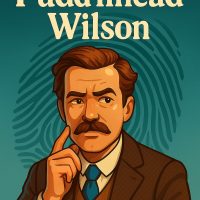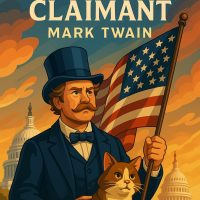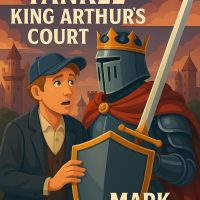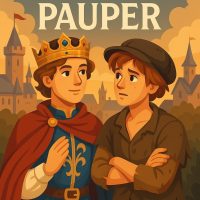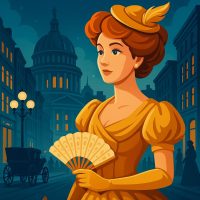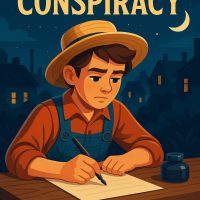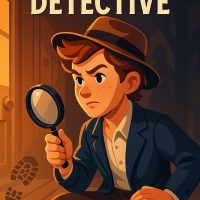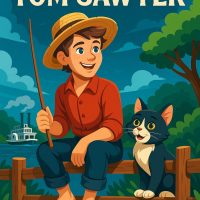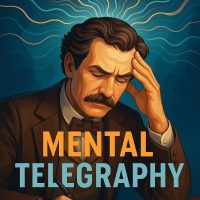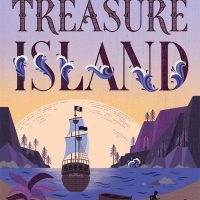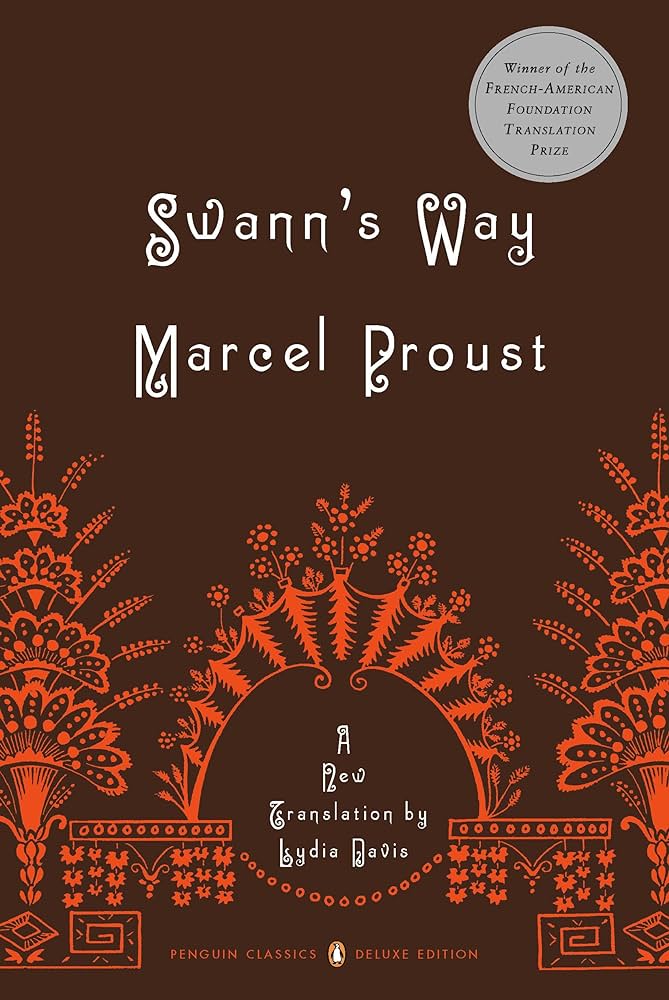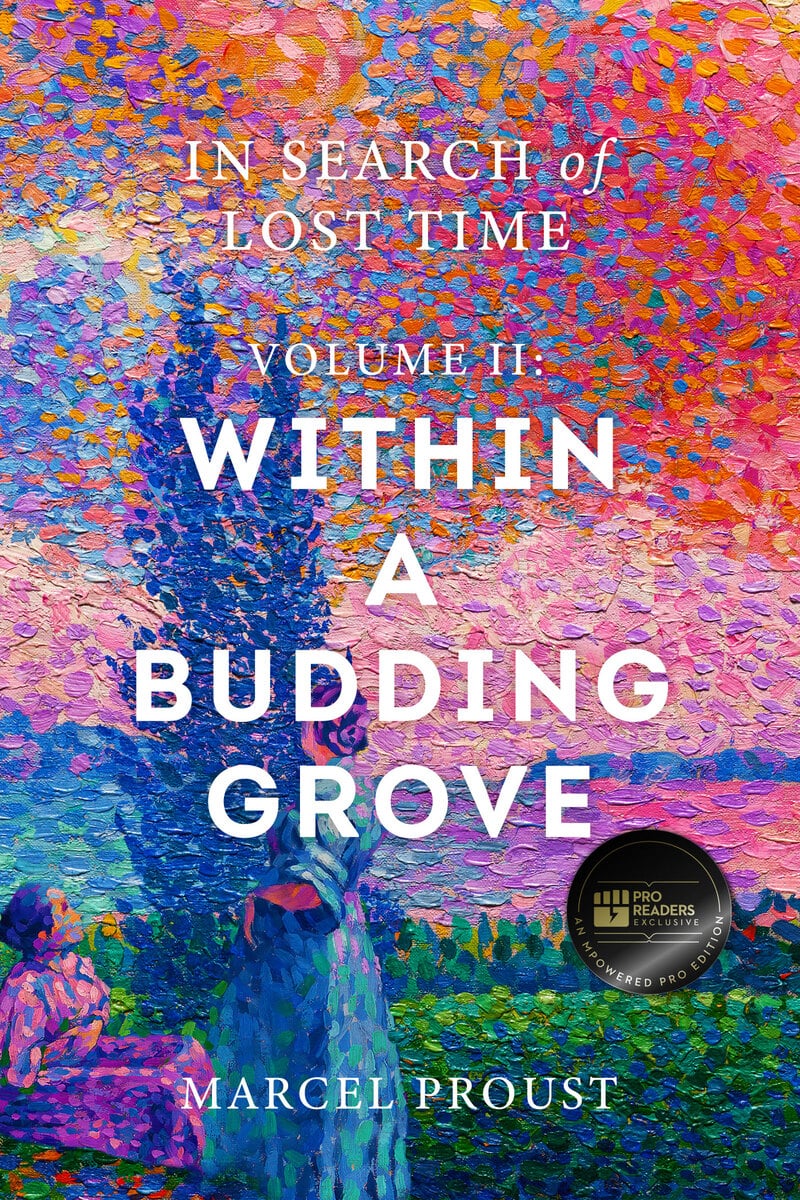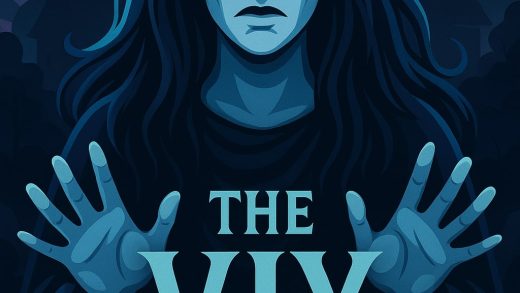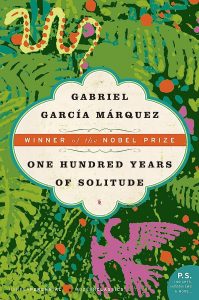Time’s List of the 100 Best Novels is a compilation published by Time magazine in 2005, featuring the 100 best English-language novels published between 1923—the year the magazine was founded—and 2005. The list was curated by literary critics Lev Grossman and Richard Lacayo, who independently created their own selections before combining them into a final, shared list. Notably, only books originally written in English were considered, which excluded many influential works translated from other languages. Similarly, novels published before 1923, such as James Joyce’s Ulysses, were not eligible.
The selection process emphasized literary significance, stylistic innovation, cultural impact, and enduring relevance. Each critic had the opportunity to advocate for works the other might not have chosen, allowing for a more diverse and eclectic collection. The final list is presented alphabetically by title, not ranked, and includes a wide spectrum of genres, authors, and narrative styles. From canonical classics to more experimental modern fiction, the list offers a panoramic view of 20th-century and early 21st-century literature in the English-speaking world.
- 1984 by George Orwell — A dystopian novel set in a totalitarian regime where every action and thought is monitored by Big Brother. The protagonist, Winston Smith, struggles to maintain his individuality and sanity in a world of relentless surveillance and propaganda. Orwell explores themes of truth manipulation, authoritarianism, and psychological control.
- A Clockwork Orange by Anthony Burgess — A shocking story of Alex, a violent youth in a futuristic society, and his forced psychological reformation. The novel challenges the concept of free will and explores whether goodness can exist without choice. Written in a unique, invented slang called “Nadsat”, it immerses readers in a disturbing moral landscape.
- A Dance to the Music of Time by Anthony Powell — A 12-volume saga that chronicles the lives of British upper- and middle-class characters across decades. Narrated by Nick Jenkins, it reflects on friendship, love, war, and social change. The series is known for its elegant prose, subtle irony, and rich portrait of 20th-century England.
- A Death in the Family by James Agee — A poignant, semi-autobiographical novel about a young boy coping with the sudden death of his father. Set in Tennessee in the early 20th century, it captures the delicate emotions of grief and family bonds. Agee’s lyrical style makes this a moving exploration of loss and memory.
- A Handful of Dust by Evelyn Waugh — A darkly satirical novel about the collapse of a marriage among the English upper class. The protagonist, Tony Last, is gradually stripped of his home, family, and identity. In a bizarre turn, he ends up in the South American jungle, trapped in a fate stranger than fiction.
- A House for Mr. Biswas by V. S. Naipaul — The story of an Indo-Trinidadian man’s lifelong quest for independence and dignity. Mr. Biswas dreams of owning his own home, symbolizing control over his life. Naipaul combines humor, tragedy, and post-colonial commentary in this richly textured novel.
- A Passage to India by E. M. Forster — Set during British colonial rule in India, this novel examines race, culture, and misunderstanding between colonizer and colonized. The story follows an Englishwoman, an Indian doctor, and the social tensions that arise from a mysterious accusation. It’s a powerful meditation on friendship, justice, and imperialism.
- All the King’s Men by Robert Penn Warren — Inspired by real-life politician Huey Long, this Pulitzer-winning novel follows the rise and fall of populist governor Willie Stark. Narrated by journalist Jack Burden, it explores corruption, idealism, and the complexities of human motivation. The prose is poetic and morally probing.
- American Pastoral by Philip Roth — A sweeping portrait of post-war American life, centered on Seymour “Swede” Levov, whose perfect suburban existence is shattered by his daughter’s political radicalism. The novel explores the illusion of the American dream and the chaos beneath its surface. Roth offers a devastating critique of identity and disillusionment.
- An American Tragedy by Theodore Dreiser — A grim tale of ambition, class, and moral weakness. Clyde Griffiths, driven by desire for wealth and status, makes fatal decisions that lead to ruin. Based on a real murder case, the novel offers a critical view of the American dream.
- Animal Farm by George Orwell — A political allegory in the form of a fable, where animals overthrow their human master to create a new society. However, the new regime soon becomes as tyrannical as the old. Orwell critiques totalitarianism and revolution through sharp, symbolic storytelling.
- Appointment in Samarra by John O’Hara — Set in 1930s Pennsylvania, this novel tells the story of Julian English, a man whose self-destructive impulses lead to social and personal collapse. O’Hara offers a chilling study of pride and downfall over a three-day span. The narrative is swift, precise, and psychologically intense.
- Are You There God? It’s Me, Margaret by Judy Blume — A beloved coming-of-age story about a sixth-grade girl navigating puberty, friendships, and questions of faith. Margaret speaks candidly to God about her fears and hopes. Blume’s honest, empathetic voice helped revolutionize young adult literature.
- At Swim-Two-Birds by Flann O’Brien — A metafictional comic novel where a student’s unfinished manuscript creates characters that revolt against their author. Blending Irish mythology, satire, and literary parody, it’s a celebration of chaotic creativity. The book is both playful and profound in its commentary on storytelling.
- Atonement by Ian McEwan — A haunting tale of love, guilt, and the consequences of a childhood lie. When young Briony accuses a man of a crime he didn’t commit, she sets off a chain of events that alters several lives. The novel moves from pre-WWII England to the war’s devastation, questioning memory and redemption.
- Beloved by Toni Morrison — A powerful, poetic novel about a former enslaved woman, Sethe, haunted by the ghost of her dead daughter. Set in post-Civil War America, it examines trauma, memory, and the bonds of motherhood. Morrison’s language is rich and haunting, earning her the Pulitzer Prize.
- Blood Meridian by Cormac McCarthy — A violent, epic novel about a teenage runaway who joins a scalp-hunting gang in the American Southwest. With its biblical prose and philosophical darkness, it explores the nature of evil and humanity. The enigmatic Judge Holden stands as one of literature’s most terrifying figures.
- Brideshead Revisited by Evelyn Waugh — A nostalgic, melancholic story of friendship, faith, and decline in aristocratic England. Charles Ryder recalls his bond with the Flyte family during Oxford years and beyond. The novel contrasts beauty with decay, and religion with loss.
- Call It Sleep by Henry Roth — A modernist masterpiece about a Jewish immigrant boy growing up in early 20th-century New York. David’s experiences with language, religion, and identity are rendered in lyrical prose. Long overlooked, it’s now considered a seminal work of immigrant literature.
- Catch-22 by Joseph Heller — A darkly comic satire about the absurdity of war, centered on WWII bombardier Yossarian. The “Catch-22” paradox traps soldiers in an endless loop of bureaucracy and madness. Heller’s nonlinear structure and biting humor made this an anti-war classic.
- Death Comes for the Archbishop by Willa Cather — A gentle, reflective novel about two Catholic priests bringing faith to the American Southwest. Rather than a plot-driven story, it’s a series of vignettes exploring spirituality, culture, and the vast Western landscape. Cather’s prose is graceful and contemplative.
- Deliverance by James Dickey — A suspenseful tale of four suburban men on a canoe trip gone disastrously wrong in rural Georgia. Confronted by violence and the raw power of nature, they are tested beyond their limits. The novel combines psychological intensity with poetic descriptions.
- Dog Soldiers by Robert Stone — A gritty Vietnam-era thriller about a journalist smuggling heroin and the violent aftermath. Caught between disillusionment and desperation, the characters drift through moral chaos. Stone offers a powerful critique of American culture and war.
- Falconer by John Cheever — A lyrical and disturbing novel about a man imprisoned for fratricide. In jail, Farragut confronts his addictions, guilt, and unexpected love. Cheever blends grace and grit in a tale of redemption and emotional depth.
- Go Tell it on the Mountain by James Baldwin — A semi-autobiographical novel about a young boy’s spiritual awakening in Harlem. Through family history and internal conflict, it delves into race, religion, and identity. Baldwin’s voice is passionate, poetic, and deeply personal.
- Gone With the Wind by Margaret Mitchell — An epic tale set during the American Civil War, following the headstrong Scarlett O’Hara as she navigates love, loss, and survival in the South. Blending romance and historical drama, the novel captures the collapse of a way of life. Scarlett’s complexity and resilience make her an enduring literary heroine.
- Gravity’s Rainbow by Thomas Pynchon — A sprawling, postmodern novel that mixes WWII espionage, rocket science, and psychedelic absurdity. Set largely in Europe during the final days of the war, it follows numerous characters in pursuit of the mysterious V-2 rocket. Dense, chaotic, and richly layered, it’s considered one of the most challenging novels of the 20th century.
- Herzog by Saul Bellow — A psychological portrait of Moses Herzog, a man writing unsent letters to friends, enemies, and historical figures during an emotional crisis. Through these letters, Bellow explores intellect, failed relationships, and the search for meaning. The novel is introspective, witty, and deeply human.
- Housekeeping by Marilynne Robinson — A lyrical novel about two sisters raised by an eccentric aunt in a small, haunting town in Idaho. Themes of transience, solitude, and the meaning of home permeate the narrative. Robinson’s prose is poetic and meditative, evoking a quiet spiritual depth.
- I, Claudius by Robert Graves — A fictional autobiography of the Roman Emperor Claudius, who survives palace intrigue by pretending to be a fool. The novel recounts the sordid lives of the Julio-Claudian emperors with vivid historical detail. It blends gossip, politics, and murder into gripping historical fiction.
- Infinite Jest by David Foster Wallace — A monumental novel set in a near-future America obsessed with entertainment and addiction. Its central threads involve a dysfunctional tennis academy, a halfway house, and a lethal film so captivating it destroys viewers. Wallace’s style is complex, fragmented, and deeply philosophical.
- Invisible Man by Ralph Ellison — A profound exploration of African-American identity and invisibility in a racially divided America. The unnamed narrator journeys from the South to Harlem, grappling with betrayal and disillusionment. Ellison’s vivid imagery and social commentary earned this novel critical acclaim.
- Light in August by William Faulkner — Set in the American South, the novel follows several characters, including Lena Grove and the tormented Joe Christmas. Themes of identity, race, and isolation are interwoven with Faulkner’s signature stream-of-consciousness style. The story is dark, haunting, and deeply emotional.
- Lolita by Vladimir Nabokov — A controversial yet masterfully written tale of obsession, as Humbert Humbert narrates his fixation with a 12-year-old girl named Dolores. Nabokov’s linguistic brilliance contrasts with the disturbing subject matter. The novel provokes questions about morality, art, and manipulation.
- Lord of the Flies by William Golding — A group of British schoolboys stranded on an island descend into savagery. As their fragile society unravels, the novel explores human nature, power, and the thin veneer of civilization. It remains a chilling allegory of moral collapse.
- Loving by Henry Green — Set in an Irish castle during WWII, this novel depicts the lives of English servants in a world of upstairs-downstairs tension. The dialogue-driven narrative captures the rhythms of speech and emotional subtleties. Green’s understated prose reveals class conflict and the illusion of control.
- Lucky Jim by Kingsley Amis — A comic novel about Jim Dixon, a disillusioned young lecturer navigating the absurdities of British academia. His misadventures and rebellion against academic pretension make for sharp satire. The novel’s humor and irreverence helped define the Angry Young Men movement.
- Midnight’s Children by Salman Rushdie — A magical realist saga about Saleem Sinai, born at the moment of India’s independence. His life, intertwined with the nation’s history, includes telepathic powers and surreal events. Rushdie blends politics, mythology, and family drama in richly imaginative prose.
- Money by Martin Amis — A satirical exploration of 1980s consumerism, following self-destructive ad man John Self as he spirals into greed and debauchery. The novel critiques excess with biting wit and metafictional flair. It’s an emblematic portrait of capitalism’s dark side.
- Mrs. Dalloway by Virginia Woolf — A single day in the life of Clarissa Dalloway as she prepares for a party in post-WWI London. Interwoven with the inner thoughts of other characters, including a shell-shocked veteran, the novel captures the fragility of time and memory. Woolf’s stream-of-consciousness style offers profound psychological insight.
- Naked Lunch by William S. Burroughs — A fragmented, surreal journey into addiction, sexuality, and government control. With its non-linear narrative and grotesque imagery, the novel challenges conventional storytelling. Burroughs presents a nightmarish vision of modern society.
- Native Son by Richard Wright — A powerful account of a young Black man, Bigger Thomas, whose life in 1930s Chicago spirals into tragedy after a violent crime. The novel exposes systemic racism, poverty, and societal neglect. Wright’s depiction of fear and injustice remains deeply resonant.
- Neuromancer by William Gibson — A cyberpunk classic about a washed-up hacker named Case hired for one last job in a digital underworld. It introduced concepts like cyberspace and AI long before they became reality. Gibson’s style is noirish, fast-paced, and visionary.
- Never Let Me Go by Kazuo Ishiguro — A haunting dystopian tale about children at a mysterious boarding school who slowly learn the dark purpose of their existence. Told with quiet restraint, it reflects on memory, love, and what it means to be human. Ishiguro evokes deep emotion with subtle narrative control.
- On the Road by Jack Kerouac — A defining novel of the Beat Generation, chronicling the cross-country journeys of Sal Paradise and Dean Moriarty. Filled with jazz, drugs, and existential yearning, it celebrates freedom and rebellion. Kerouac’s spontaneous prose mirrors the wild rhythm of youth.
- One Flew Over the Cuckoo’s Nest by Ken Kesey — Set in a mental hospital, the story pits charismatic rebel Randle McMurphy against the tyrannical Nurse Ratched. Through the eyes of silent Chief Bromden, the novel critiques institutional control and conformity. It’s both tragic and triumphant.
- Pale Fire by Vladimir Nabokov — A novel structured as a 999-line poem and a madman’s commentary on it, blurring reality and delusion. Charles Kinbote, the commentator, becomes an unreliable narrator of his own fantasies. Nabokov plays with form, authorship, and identity in dazzling ways.
- Play It As It Lays by Joan Didion — A minimalist novel about Hollywood actress Maria Wyeth’s descent into depression and emotional numbness. Set in 1960s California, it examines alienation, despair, and the emptiness of fame. Didion’s sparse prose heightens the existential bleakness.
- Portnoy’s Complaint by Philip Roth — A monologue of neurotic, sexually frustrated Alexander Portnoy to his psychoanalyst. The novel scandalized readers with its candor, wit, and taboo topics. Roth brilliantly combines satire, self-exposure, and cultural commentary.
- Possession by A. S. Byatt — A literary detective story about two modern scholars uncovering a secret romance between fictional Victorian poets. Mixing poetry, letters, and narrative, the novel explores love, authorship, and historical obsession. Byatt’s work is both intellectual and emotionally rich.
- Rabbit, Run by John Updike — This novel introduces Harry “Rabbit” Angstrom, a former high school basketball star who flees his suburban life in search of freedom. Caught between obligation and desire, Rabbit’s impulsive decisions lead to emotional chaos. Updike captures postwar American restlessness with lyrical prose and acute observation.
- Ragtime by E. L. Doctorow — A historical novel blending fiction and real figures like Houdini and Henry Ford in early 20th-century America. Through multiple intersecting narratives, it explores race, class, and change. Doctorow’s style is cinematic, with anachronistic flair and deep emotional undercurrents.
- Red Harvest by Dashiell Hammett — A hard-boiled detective novel set in a corrupt mining town where a nameless operative cleans house with ruthless efficiency. With sharp dialogue and escalating violence, it inspired both noir fiction and films. Hammett’s prose is gritty, fast, and uncompromising.
- Revolutionary Road by Richard Yates — A devastating portrait of a suburban couple who dream of escaping their stifling lives but face crushing disappointment. The novel unflinchingly portrays the illusions of postwar domestic bliss. Yates’s prose is emotionally raw and psychologically precise.
- Slaughterhouse-Five by Kurt Vonnegut — A satirical anti-war novel following Billy Pilgrim, who becomes “unstuck in time” after surviving the Dresden bombing. Combining science fiction, trauma, and black humor, Vonnegut questions the meaning of war and existence. The phrase “So it goes” echoes throughout as a grim mantra.
- Snow Crash by Neal Stephenson — A cyberpunk thriller featuring Hiro Protagonist, a hacker and pizza delivery guy battling a deadly virtual virus. Combining ancient Sumerian myth with futuristic tech, it’s wildly inventive and fast-paced. Stephenson’s satire of capitalism and digital culture is razor-sharp.
- The Adventures of Augie March by Saul Bellow — A coming-of-age picaresque following Augie as he drifts through 1930s America, trying on identities and chasing adventure. Augie’s voice is exuberant, philosophical, and uniquely American. Bellow celebrates individualism in chaotic times.
- The Assistant by Bernard Malamud — A somber tale of a struggling Jewish grocer and the troubled young man who comes to work for him. Themes of guilt, redemption, and human decency permeate the modest setting. Malamud’s writing is tender, restrained, and morally serious.
- The Berlin Stories by Christopher Isherwood — Two linked novellas capturing the decadence and anxiety of Berlin during the rise of Nazism. Narrated by the observant Mr. Norris and the semi-autobiographical “I”, the stories inspired the musical Cabaret. Isherwood’s style is direct yet evocative of moral complexity.
- The Big Sleep by Raymond Chandler — The first Philip Marlowe mystery, steeped in California noir, crime, and corrupt glamour. The detective navigates a labyrinth of deception, blackmail, and murder. Chandler’s prose is sharp, cynical, and filled with unforgettable one-liners.
- The Blind Assassin by Margaret Atwood — A layered novel within a novel, blending family saga, political history, and pulp science fiction. It follows the life of Iris Chase and her sister Laura, whose mysterious death haunts the narrative. Atwood masterfully weaves themes of memory, betrayal, and authorship.
- The Bridge of San Luis Rey by Thornton Wilder — After a bridge collapses in Peru, a monk investigates the lives of its five victims to uncover a divine plan. The novel ponders fate, love, and human connection. Wilder’s philosophical depth is paired with elegant simplicity.
- The Catcher in the Rye by J. D. Salinger — A teenage classic narrated by Holden Caulfield, who wanders New York in rebellion and confusion after being expelled from school. His voice captures adolescent alienation and disdain for adult “phoniness.” The novel’s emotional honesty resonates across generations.
- The Confessions of Nat Turner by William Styron — A fictionalized first-person account of the 1831 slave rebellion in Virginia. Nat reflects on his life, faith, and violent uprising against oppression. The book sparked controversy but remains a powerful meditation on race and revolt.
- The Corrections by Jonathan Franzen — A multigenerational family saga exploring the dysfunction and disillusionment of the modern American family. As siblings converge for a final Christmas with their ailing parents, secrets and regrets surface. Franzen combines satire, compassion, and sociopolitical critique.
- The Crying of Lot 49 by Thomas Pynchon — A surreal, paranoid novella about Oedipa Maas uncovering a secret postal conspiracy. Full of puns, symbols, and cultural commentary, it’s both detective story and existential puzzle. Pynchon’s quirky brilliance has inspired decades of interpretation.
- The Day of the Locust by Nathanael West — A bleak depiction of Hollywood dreamers and misfits spiraling into rage and madness. Tod Hackett, an artist, witnesses the grotesque underbelly of showbiz. The novel culminates in a chaotic riot, reflecting a society on the brink.
- The Death of the Heart by Elizabeth Bowen — A subtle, psychological novel about a teenage orphan navigating betrayal and emotional awakening in upper-class London. The prose is elegant, the tone melancholic. Bowen excels in portraying silent cruelties and emotional isolation.
- The French Lieutenant’s Woman by John Fowles — A Victorian love story with postmodern twists, following a gentleman’s obsession with the mysterious Sarah Woodruff. Fowles disrupts narrative conventions, offering multiple endings and intrusive commentary. The novel blends romanticism with philosophical depth.
- The Golden Notebook by Doris Lessing — A feminist landmark featuring writer Anna Wulf, who keeps separate notebooks to manage her fragmented life. It addresses politics, motherhood, mental breakdown, and literary identity. Lessing’s experimental structure mirrors her heroine’s inner turmoil.
- The Grapes of Wrath by John Steinbeck — A powerful depiction of the Dust Bowl migration during the Great Depression. The Joad family travels west in search of dignity and survival. Steinbeck’s compassion and social criticism remain deeply moving.
- The Great Gatsby by F. Scott Fitzgerald — A Jazz Age masterpiece centered on the mysterious millionaire Jay Gatsby and his doomed pursuit of Daisy Buchanan. Through Nick Carraway’s narration, it explores illusion, ambition, and the American dream. Fitzgerald’s prose is lyrical and tragic.
- The Heart is A Lonely Hunter by Carson McCullers — A Southern gothic novel about a mute man and the people who confide in him. Themes of isolation, longing, and miscommunication bind the characters. McCullers writes with empathy and quiet power.
- The Heart of the Matter by Graham Greene — Set in colonial West Africa during WWII, this novel follows Scobie, a tormented British officer grappling with duty, love, and guilt. As his moral compromises deepen, he faces spiritual crisis. Greene blends suspense with Catholic existentialism.
- The Lion, The Witch and the Wardrobe by C. S. Lewis — The first published Chronicles of Narnia book, where four siblings enter a magical world through a wardrobe. They join the fight against the White Witch under the guidance of the lion Aslan. A classic of children’s fantasy and allegorical storytelling.
- The Lord of the Rings by J. R. R. Tolkien — An epic high-fantasy trilogy following Frodo Baggins and his companions as they journey to destroy the One Ring. Set in the richly imagined world of Middle-earth, the story weaves themes of friendship, sacrifice, and the battle between good and evil. Tolkien’s work defined modern fantasy and remains beloved across generations.
- The Man Who Loved Children by Christina Stead — A dark domestic drama centered on the dysfunctional Pollit family. With a domineering father and a resentful daughter, the novel explores family tensions, emotional abuse, and stifled ambition. Stead’s intense psychological detail and poetic language make it a demanding but rewarding read.
- The Moviegoer by Walker Percy — A quiet existential novel about Binx Bolling, a New Orleans stockbroker searching for meaning in everyday life. His journey takes place during Mardi Gras, mirroring his internal conflict. Percy combines philosophy and Southern sensibility in a meditative style.
- The Painted Bird by Jerzy Kosinski — A harrowing tale of a young boy wandering through brutal Eastern European villages during World War II. Witnessing cruelty, superstition, and violence, the unnamed protagonist becomes a symbol of human endurance. The novel is haunting, controversial, and graphically unsettling.
- The Power and the Glory by Graham Greene — Set in Mexico during anti-Catholic persecution, it follows a “whisky priest” fleeing government agents while grappling with guilt and redemption. Greene examines the conflict between human weakness and divine grace. The novel blends suspense with spiritual introspection.
- The Prime of Miss Jean Brodie by Muriel Spark — A sharp satire about a charismatic teacher at a Scottish girls’ school who manipulates her students to fulfill her ideals. Miss Brodie’s influence and downfall unfold through crisp prose and moral ambiguity. Spark’s wit and economy of style make it unforgettable.
- The Recognitions by William Gaddis — A sprawling, erudite novel about art, forgery, and spiritual emptiness. Following painter Wyatt Gwyon, who fakes old masters, the book critiques postwar American culture. With dense prose and allusions, it’s a landmark of postmodern literature.
- The Sheltering Sky by Paul Bowles — A philosophical travel novel about a married couple wandering through North Africa in post-war aimlessness. As they face cultural alienation and psychological disintegration, the desert becomes a metaphor for existential despair. Bowles’s prose is haunting and beautifully bleak.
- The Sot-Weed Factor by John Barth — A bawdy, metafictional parody of colonial adventure novels, centered on poet Ebenezer Cooke’s misadventures in 17th-century Maryland. Barth plays with language, storytelling, and historical pastiche. The novel is both hilarious and intellectually challenging.
- The Sound and the Fury by William Faulkner — A groundbreaking Southern novel told through multiple narrators, including a cognitively disabled man. It explores the decline of the Compson family with nonlinear time and stream-of-consciousness style. Faulkner’s narrative innovation reshaped American fiction.
- The Sportswriter by Richard Ford — The first in the Frank Bascombe series, this novel follows a sports columnist coping with divorce, grief, and aimlessness. Through introspective prose, Ford explores modern masculinity and midlife crisis. The tone is melancholic, thoughtful, and honest.
- The Spy Who Came in From the Cold by John le Carré — A gritty, realistic espionage novel set during the Cold War. Disillusioned British spy Alec Leamas undertakes a dangerous mission behind the Iron Curtain. Le Carré deconstructs spy fiction with moral ambiguity and psychological depth.
- The Sun Also Rises by Ernest Hemingway — A post-WWI novel about disillusioned expatriates in Paris and Pamplona, centered on Jake Barnes and Lady Brett Ashley. The story captures the “Lost Generation” and their quest for meaning through bullfights, love, and drink. Hemingway’s sparse prose and emotional restraint are iconic.
- Their Eyes Were Watching God by Zora Neale Hurston — A lyrical novel about Janie Crawford’s journey through love, hardship, and self-realization in early 20th-century Florida. Told in vibrant dialect and poetic narration, it celebrates Black womanhood and resilience. Hurston’s voice is powerful, unique, and long-overdue in recognition.
- Things Fall Apart by Chinua Achebe — A foundational African novel tracing the life of Okonkwo, a proud Igbo warrior, as colonialism disrupts his world. Achebe portrays precolonial Nigerian culture and the tragedy of cultural clash. Its spare, elegant prose brought African literature to global prominence.
- To Kill a Mockingbird by Harper Lee — A deeply moving novel about racial injustice and childhood innocence in the American South. Told through the eyes of Scout Finch, it centers on her father Atticus, who defends a wrongfully accused Black man. Lee blends warmth, moral clarity, and social critique.
- To the Lighthouse by Virginia Woolf — A modernist masterpiece portraying a family’s visits to a Scottish island before and after World War I. Woolf experiments with time, perception, and memory through fluid, introspective narration. The novel meditates on art, gender, and the passage of life.
- Tropic of Cancer by Henry Miller — A provocative, autobiographical novel of bohemian life in 1930s Paris. Explicit and unfiltered, it blends sexual frankness with existential musing. Banned in the U.S. for decades, it became a symbol of literary freedom.
- Ubik by Philip K. Dick — A trippy science fiction story where time, death, and reality unravel after a corporate attack. As characters experience reality shifts, the mysterious product Ubik may hold the key to survival. Dick questions perception, control, and the nature of existence.
- Under the Net by Iris Murdoch — A philosophical and comic novel about a struggling writer navigating absurd encounters in postwar London. Themes of language, art, and truth drive his chaotic search for meaning. Murdoch’s debut showcases her wit and intellect.
- Under the Volcano by Malcolm Lowry — Set on Mexico’s Day of the Dead, it follows a British consul’s final, alcohol-soaked day. Haunted by personal demons and lost love, he spirals toward destruction. The novel’s dense symbolism and tragic beauty earned it cult status.
- Watchmen by Alan Moore and Dave Gibbons — A deconstruction of superhero mythology set in an alternate Cold War-era America. Through complex characters and layered storytelling, it critiques power, justice, and morality. The graphic novel revolutionized the genre with depth and sophistication.
- White Noise by Don DeLillo — A satirical look at modern life through the eyes of a professor of “Hitler Studies” and his family, living in fear of death and media overload. The novel examines consumer culture, environmental disaster, and existential dread. DeLillo’s deadpan style underscores the surreal absurdity of the everyday.
- White Teeth by Zadie Smith — A multigenerational novel about two London families—one Bangladeshi, one English-Jamaican—navigating identity, immigration, and history. With energy and wit, Smith examines cultural clashes and personal destiny. Her debut stunned readers with its scope and voice.
- Wide Sargasso Sea by Jean Rhys — A prequel to Jane Eyre, this novel gives voice to Bertha Mason, the “madwoman in the attic”. Set in postcolonial Jamaica, it explores race, gender, and displacement. Rhys’s prose is lyrical and haunting, reclaiming a silenced perspective.

